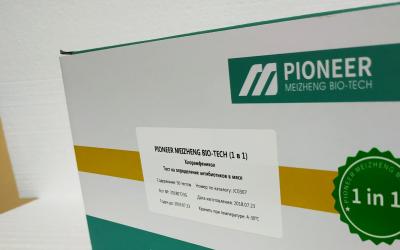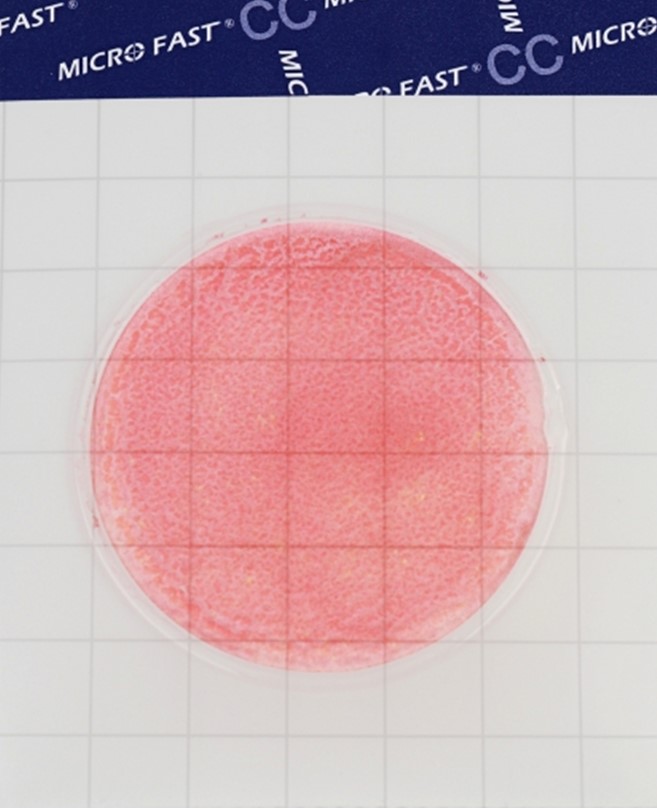Report of the VIC Group: The efficiency of production of veterinary drugs will increase using a competent strategy

On the first day of the business program in the section on veterinary medicine, speakers discussed the problem of antibiotic resistance and presented modern solutions to avoid the unnecessary use of chemicals in the fight against animal diseases.
DIRECTOR of the pig breeding division of the VIC Group of Companies, Alexander Klyandin, spoke about the necessary technological solutions for risk management in production. He outlined global trends in pig farming, such as vaccination, biosafety, diagnostics, management, ecology and strategy for the use of antibacterial drugs. Alexander Klyandin paid special attention to the problem of antibiotic resistance, noting that veterinary medicine uses 2.5 times more antibiotics than medicine. He also emphasized that a lot of resources and time are spent on developing new drugs, and resistance to them develops much faster. Antibiotic resistance also leads to an increase in production costs and a decrease in its effectiveness.
For more effective antibiotic therapy, it is recommended to use laboratory diagnostics, staff training, adherence to treatment technologies with correctly selected drugs and sanitary and hygienic standards. It is also important to develop alternative methods such as phytobiotics, probiotics and prebiotics, which will help normalize the intestinal microflora and increase natural resistance.
As a result, an effective strategy for the use of antibacterial drugs helps improve production performance and reduce risks in the enterprise.
Lyubov Denisova, leading veterinary consultant at VIC Group, also emphasized the importance of judicious use of antibiotics in pig farming and spoke in more detail about other methods of disease control - phytobiotics and acidifiers.
She presented the results of a program to control gastrointestinal diseases in pigs using the phytobiotic PROACTIVE KER RS: average daily gain increased by 7.4%, average weight increased by 5.1%, mortality decreased by 31% and company revenue increased by 6 ,5%.
Denisova also noted that the correct balanced composition of organic acids has a bacteriostatic and bactericidal effect. The use of the acidifier PRODACTIVE ACID SE within the framework of the program "Control of pathogens through organic acids" at some pig-breeding enterprises of the Russian Federation showed an increase in average daily gain by 6.3%, average weight by 4.1%, a decrease in mortality by 48.4% and an increase in revenue by 5 %.
The speaker said that alternative methods have already proven effective in controlling diseases in pigs.
On the second day of the business program of the conference, leading technologist-consultant of the pig breeding division of the VIK Group of Companies, DOCTOR of Agricultural Sciences. Angelika Zabolotnaya spoke about 10 key factors that should be taken into account when raising a replacement pig.
The selection of pigs should begin from birth, choosing those with a high selection index. It is necessary to take in gilts with a live birth weight of more than 1.2 kg for repair. Feed pigs a separate feed with a formulation containing the optimal amount of vitamins, calcium and phosphorus. Provide pigs with a large pen area - 1.5-1.9 sq.m. for one HEAD. Select gilts with developed external genitalia and a minimum of 14 abdominal teats after reaching a weight of 100 kg. Pay attention to the position of the limbs, the absence of wounds and bumps in the hooves and joints. Transfer pigs to an adapter to a site for single and pregnant sows no later than 160-170 days. All vaccinations must be completed 2 weeks before the planned insemination. Place pigs in small group pens of 10-12 heads with dosed feeding. Provide 16 hours of daylight and 200-300 lux of illumination at eye level for normal synthesis of sex hormones. Stimulate the gilts' hormonal system with regular sessions with the boar "piglet to piglet" twice a day for 7 minutes. Carry out the first insemination of gilts with a live weight of 140-150 kg, age 230-240 days, during the second or third recorded heat and a back fat thickness of 16-19 mm at the level of the sixth-seventh thoracic vertebra.Anzhelika Zabolotnaya also shared the results of 13 production experiments using the feed additive AXION SWINE, aimed at increasing the MILK productivity of sows. On average, there was an increase in the number of piglets at weaning by 0.26 heads, an increase in their weight by 244 grams and an increase in the total weight of the nest by 4.6%. This brought an additional profit of 627 rubles per nest and a return on investment of 5.3 rubles for every ruble invested .
Anzhelika Zabolotnaya emphasized that the bestpiglets are obtained from main sows, from which they are born heavier, have better preservation and produce a carcass at the finish that is 4-5 kg larger. Proper rearing of replacement gilts plays a key role in the enterprise development strategy for the next 3 years.
Anzhelika Zabolotnaya concluded her presentation with the presentation of a new educational film from the VIC Group about modern pork production.
Read together with it:
- Цифровизация агрострахования: как новые технологии снижают мошенничество в отраслиС 2022 года данные методы начали активно применять правоохранительные органы при рассмотрении обращений аграриев о помощи в экстренных ситуациях. Анализ показывает, что количество судебных разбирательств по вопросам агрострахования с государственной поддержкой значительно снизилось, что подтверждается недавними показателями: в 2......
- "Истинный полешук" Русый рассказал, как нарушил стиль работы на совещании у ПрезидентаМихаил Русый 18 ноября, Минск. Александр Лукашенко 18 ноября собрал совещание по темам развития районов Припятского Полесья и реализации соответствующей программы. Основным докладчиком на мероприятии выступил Михаил Русый - "истинный полешук", как назвал его Президент, уполномоченный представитель главы государства в Брестской области и председатель Постоянной комиссии по законодательству и госуда...
- Чили: ChileMEAT предупреждает об убытках более чем в 6 миллиардов долларов из-за остановки производства говядиныЧилийская ассоциация мясоперерабатывающих и холодильных предприятий (ChileMEAT) выпустил официальное предупреждение, выражающее глубокую обеспокоенность критической ситуацией в южной части страныКризис стал результатом 15 дней непрерывной мобилизации должностных лиц, объединенных в Национальную ассоциацию должностных лиц сельскохозяйственной и животноводческой службы (Asfusag) , что привело к полн...
- Спрос на мясо в США останется высоким до 2026 годаВ интервью Valor Agregado на Radio Carve Мартинес отметил, что сейчас все с нетерпением ждут, что в конечном итоге произойдет в отношениях североамериканской страны с Бразилией и Аргентиной в связи с возможным снижением тарифов и дополнительной квотой в 60 000 тонн соответственно. Что касается дополнительной квоты Аргентины, которая увеличивается с 2......
- Русый о программе развития Припятского Полесья: я готов голову заложить, все просчитано десятки раз18 ноября, Минск. Все показатели, предусмотренные программой развития Припятского Полесья, детально проверены, реалистичны и учитывают реальное положение дел. Об этом заявил Председатель Постоянной комиссии Совета Республики Национального собрания по законодательству и государственному строительству, уполномоченный представитель главы государства в Брестской области Михаил Русый у Президента Белар...
- Инновации и сотрудничество в птицеводстве: Птицефабрика Чайковская на семинаре в КитаеСреди обсуждаемых тем были современные методы кормления, стратегии улучшения здоровья животных и переход к безантибиотиковым технологиям. Акцент был сделан на снижении затрат на кормление для повышения конкурентоспособности в условиях глобального рынка. Также участники посетили завод Menon, где прошла экскурсия по современным производственным мощностям. Генеральный директор компании Мисма подчеркн...
- Sustainable growth in pig farming: Verdazernoprodukt LLC plans to increase pork production to 44,000 tons by 2025The company's primary focus is on breeding purebred pigs. This year, 3,221 pigs were sold, including Landrace, Large White, and L65 terminal breeds, which are renowned for their high productivity and MEAT quality. The company breeds elite piglets on its own full-cycle pig farm, which allows it to control all stages of production and ensure high product quality. Irina Leonova, DIRECTOR of Verdazern...
- FT узнала о планах Renault и Nissan возобновить альянсОтношения между концернами обострились после ареста бывшего главы альянса в 2018 году из-за скандала о финансовых махинациях. Переговоры о возобновлении сотрудничества начались после отставки гендиректора Renault в середине лета Французская автомобильная корпорация Renault и японский автопроизводитель Nissan обсуждают возрождение своего 26-летнего альянса из-за недавних кадровых перестановок в обе...






























































